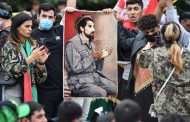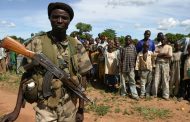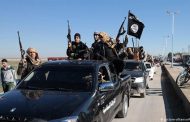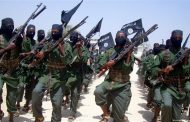The civil war in Syria now in its sixth year has created the worst humanitarian crisis of our time and in tandem with other brutal conflicts has sparked this is as a result of brutal violence by civil wars.
The reverberations of this war are felt across the globe, as we see the Syrian conflict presents a unique amalgam of humanitarian and security concerns, inextricably bonding together these dual dimensions of the conflict. The humanitarian crisis perpetuated by the Syrian civil war is a generational global security crisis in the making. The violence of the war has been ferocious and often indiscriminate, with little regard for civilian life or property.
SYRIA’S CHILDREN & WAR
For any child in the world according to the children’s right, three years can seem like a lifetime. Three years can transform a baby into a preschooler learning to read. Three years can see a young schoolchild grow into a teenager entering the exciting world of secondary school. Three years can turn an uncertain fifteen-year-old into a proud young student on the first day of university. But not for Syria’s children. The war eliminated them.
since early 2012 we have reached more than 4.2 million people across the region—inside Syria and in neighboring countries where Syrians have taken refuge—with lifesaving services and support.
The world was awakened to the enormity of the crisis now a day Unicef said at least 652 children died – 255 of them in or near a school – last year, a 20% jump from the number killed during 2015, and more than 850 children were recruited to fight in 2016.
The number is double that of 2015, the report states. Those recruited increasingly found themselves on the frontline or, in extreme cases, used as executioners, suicide bombers or prison guards.
After six years more than 400,000 1 people have been killed, including up to 55,000 children. This represents one child killed every hour since the war began. Tens of thousands of children have lost one or both parents and have suffered life-changing injuries, and 411,000 children are living under siege. At least 13.5 million people need humanitarian assistance inside Syria alone, while over five million refugees from Syria have fled to neighbouring countries, including Turkey, Lebanon, Jordan, and Iraq.
The result of the wars
Today, It is estimated there is up to one million children who live under siege and in hard-to-reach areas.
Syria children suffered from the war one in 10 children – over 1.2 million – have fled the country to become refugees in neighbouring countries. And these numbers are rising every day. Over 1.1 million Syrian children have registered as refugees with UNHCR worldwide. according to the first three years of the war, some 75 percent are under the age of 12. Children represent 52 percent of the total Syrian refugee population, which now exceeds 2.2 million. The majority live in Syria’s neighbouring countries, with Jordan and Lebanon combined hosting more than 60 percent of all Syrian refugee children. in 31 October 2013, the results show that 291,238 Syrian refugee children were living in Jordan, and 385,007 in Lebanon. But, the results increasing in 2016-2017, Turkey continues to host the largest number of Syrian 1.2 are children under the age of 18 years. and, nearly 500,000 Syrian refugee children (252,735 girls and 247,108 boys) are enrolled in formal education across the country, while an estimated 370,000 remain out of school. Moreover, Lebanon hosts an estimated 1.5 million Syrian refugees, in addition to approximately 300,000 Palestinians (around 30,000 of whom are arrivals from Syria). And, Jordan hosts 2.7 million refugees, including about 656,000 registered Syrian refugees (51 percent children), and over 2.1 million long staying registered Palestinian refugees. Approximately 60,000 Syrians are living in areas near Hadalat and Rukban, on the border between Jordan and Syria. While 80 percent of the 656,000 Syrian refugees registered with UNHCR in Jordan live in host communities, a total of 79,559 refugees live in Za’atari camp; 45,442 live in Azraq camp; 332 live in King Abdullah Park and 8,000 live in the Emirati-Jordanian Camp.
In Egypt, the national authorities played a key role in supporting Syrian refugees’ protection, education and health needs, however, an already stretched socio-economic system remains under pressure at the host communities’ level due to increase of demand, the number of Syrian refugees at risk of poverty has increased from 92 percent in 2014 to 95 percent in 2016. Approximately 66 percent of the Syrian families cannot meet 50
Furthermore, according to the child labor increased from 2 to 3 percent in 2014 to 5 percent in 2016 further exposing children to protection risks. But today, It is estimated there are up to one million children who live under siege and in hard-to-reach areas.
How the European Union support Syrian children’s crisis.
In July 2013 the UN stopped counting the death toll due to a lack of confidence in its own data. In mid-2015 it estimated that over 250,000 people had been killed and well over a million injured since the conflict in Syria began in 2011.Then, the estimates of the death toll have varied. In February 2016 the Syrian Centre for Policy Research claimed the figure was as high as 470,000.But, In April 2016 the UN special envoy in Syria, Staffan de Mistura, put the figure around 400,000.
UNHCR shows more than 937,718 asylum applications were made by Syrians in Europe between April 2011 and March 2017, the EU has realized the danger to the world of young Syrians on 21 April 2016 the Government announced it would work with the UNHCR to resettle children and adult refugees from the Middle East and North Africa (MENA) region. In a Written Statement the then Minister for Immigration, James Brokenshire, explained the scheme will not cater exclusively for unaccompanied children or Syrian nationals but will be extended to all ‘Children at Risk’ as defined by the UNHCR. as well as other vulnerable children such as child careers and those facing the risk of child labour, child marriage or other forms of neglect, abuse or exploitation.
UK’s commitment to assist vulnerable refugee children at risk through further resettlement efforts which uphold the principles of child protection. A total of 7,307 people have been granted humanitarian protection under the Syrian Vulnerable Person Resettlement Programme (VPRP) since the programme began. 5,453 people were resettled under the programme in the year ending March 2017 (of whom 50% were children).
The European Union believes that more than 13 million people in need of humanitarian assistance. Of these, 6.1 million are internally displaced and 3.4 million live in hard-to-reach and besieged areas. Children and young people comprise more than half of the displaced population. Civilians continue to be the primary victims of the conflict. Rape and sexual violence, enforced disappearances, forcible displacement, recruitment of child soldiers, executions and deliberate targeting of civilian places and infrastructure, have become commonplace..
A new generation of ISIS
According to the outcome of wars in the Middle East there are a new generation of Isis recruits is being developed in the Islamic State’s “caliphate”, indoctrinated with religious concepts from birth, during they stay in the refugee and viewed by its fighters as better and purer than themselves, according to the first study of the exploitation and abuse of children as a means of securing the group’s future.
The Islamic States, jihadists, and ISIS focuses on a large number of its efforts on indoctrinating children through an extremism-based education curriculum, ISIS is known for using children – dubbed ‘caliphate cubs’ – as suicide bombers, soldiers and even executioners in their attempt to seize control and instill fear across Iraq and Syria.
Moreover, the results show that ISIS has recruited 400 children in Syria since January In neighboring Syria, Islamic State jihadists recruited at least 400 children during a three-month period in the winter of 2014/2015, the Syrian Observatory for Human Rights (SOHR) reported in March. These children, dubbed ‘Cubs of the Caliphate,’ received military and religious training. But, in 2016 the there are more than 80,000 militants, 50,000 in Syria and 30,000 in Iraq. An estimated 6 million men, women, and children are said to be living within its self-styled Isis caliphate.
At the end, according to the wars in the Middle East, the marginalization of children, displacement, and recruitment, we have to ask our self-important question.What does the Islamic State want from Syria ? & What does Bashar Al-Assad’s regime want from Syria? the results show the destruction not only to Syria, but to the whole world, I think this is the third World War, it’s not between two countries but from Syrians themselves, this war has affected the world by using the second generation of mujahideen, and fostering them to become future terrorists.
Please stop fighting !!!!







































admin in: How the Muslim Brotherhood betrayed Saudi Arabia?
Great article with insight ...
https://www.viagrapascherfr.com/achat-sildenafil-pfizer-tarif/ in: Cross-region cooperation between anti-terrorism agencies needed
Hello there, just became aware of your blog through Google, and found ...